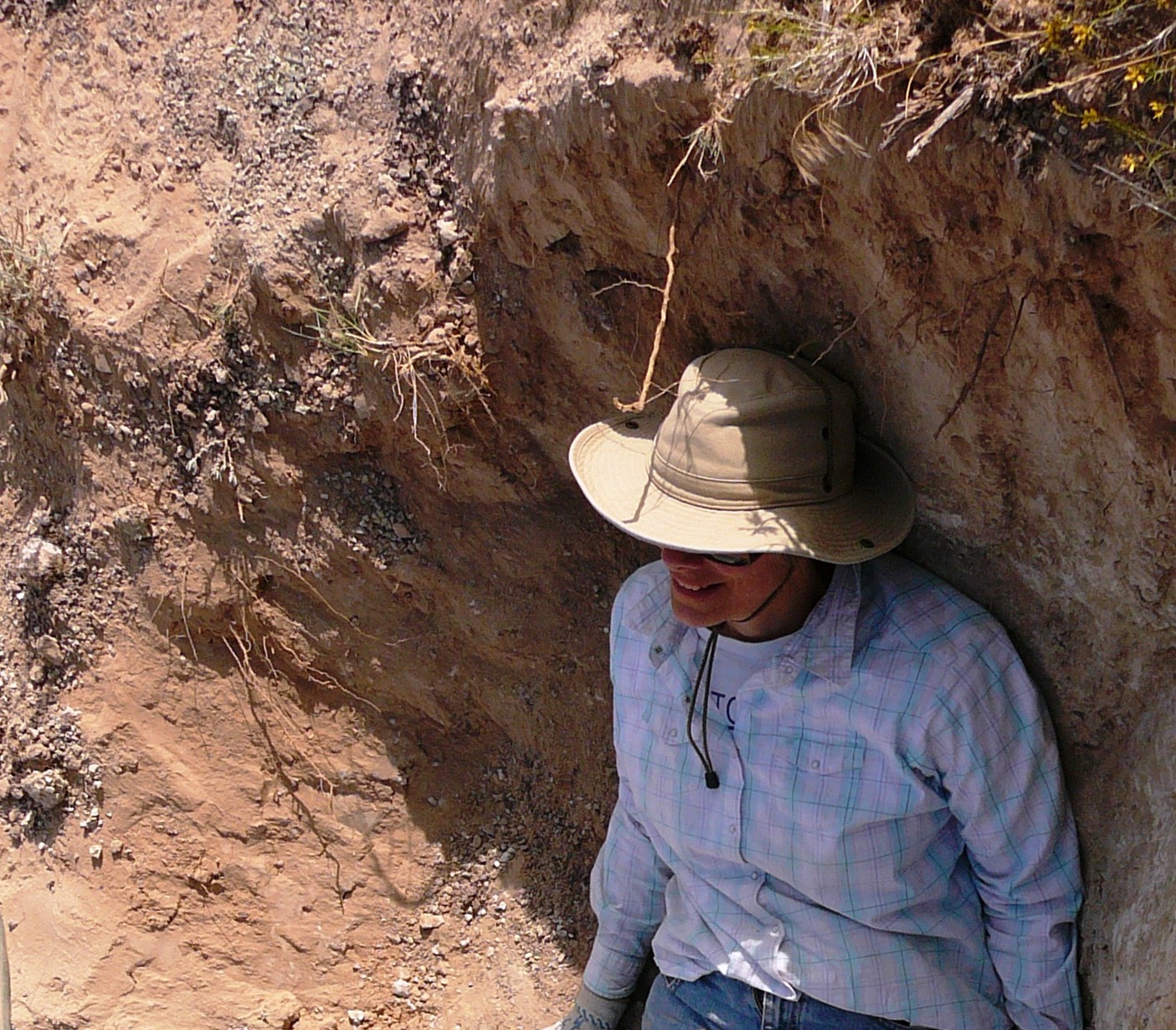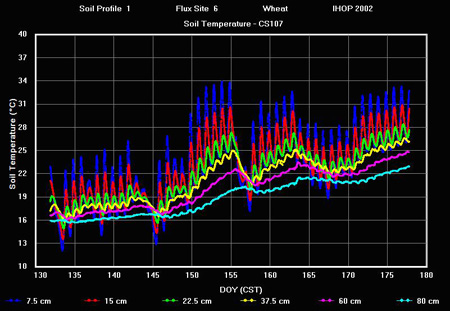During the summer, abundant sunshine during the long days heats up the ground near the surface. I’ve seen surface temperatures on dry ground up to 50°C in the south-central Great Plains of the United States. If you’ve dug a hole in the ground, have you noticed how cool the soil is? Last fall, when I was digging a hole for a dinosaur dig, I sat in the hole to cool off! (Figure 8).

Figure 8. Me enjoying the relatively cool temperatures in a hole. The shade helped, too! Photo by Lorrie McWhinny.
Figure 9 shows how the temperature varied beneath a winter wheat field in south-central Kansas during the late spring-early summer of 2002. The temperature 7.5 centimeters below the surface (blue curve) reaches a maximum in the early afternoon, with the peaks slightly later as you go to lower levels. Note that the daytime temperature at 7.5 centimeters below the surface is warmer than that at 15 centimeters, and so on, with the coolest temperatures at 80 centimeters below the surface.

Figure 9. Soil temperature as a function of day of year for a winter-wheat site in south-central Kansas. The distances in cm (centimeters) indicate how far below the ground surface the measurement is being taken. Day 138 is 18 May, Day 150 is 30 May, Day 180 is 29 June. All data for 2002. Date collected and processed by Professor Richard Cuenca, Oregon State University. The maxima in the blue curve occur in the early afternoon.
These data, which are fairly typical, are consistent with our impression that the soil is usually cooler than the surface for most of the day during summertime. (The cooler surface temperatures on some days appear to be related to rainfall.)
The surface temperature for the same site appears in figure 10. Notice how the surface temperature peaks during the day about five degrees higher than at 7.5 centimeters during the first part of the data record, and then 10-15 degrees higher than the temperature at 7.5 centimeters late in the record. The change is related to cooling of the winter wheat (the sensor is measuring the temperature of the winter wheat) due to evapotranspiration during the first part of the record. Once the winter wheat stops growing and becomes golden, transpiration is no longer happening and the dry wheat and then the wheat stubble and ground surface are strongly heated by the sun.
Figure 10. For same site as Figure 4, except for surface temperature. Note that the wheat becomes golden (senescent, stops growing, is almost ready to harvest) around Day 150 (30 May).
The same happens to the bare ground at other sites – the surface is much warmer than the temperature 7.5 cm below the surface.
Have you been in a cave in the summertime? Caves, being farther from the surface, are even cooler. At the Devil’s Icebox, a cave not far from where I am writing this blog in Columbia, Missouri, the temperature stays at about 56°F (13°C) all year, even though the average summertime high temperature in Columbia is in the upper eighties (around 30° Celsius) and the average wintertime low temperature here is in the mid-teens (around -8° C).
So in the summer, the ground gets cooler as you dig down, — at least through the upper few meters. In the winter, the ground gets warmer farther down. And in caves, the temperature doesn’t change much at all. In fact, I once read that a cave temperature is a good first guess of the average above-ground air temperature at the cave’s location.
Similarly, people in many countries take advantage of the cool below-ground temperatures too store food during the hot summer. Also, some people take advantage of the temperature several feet below the surface to heat their homes in the winter and cool their homes in the summer.

that’s a great blog.. tks for share your post